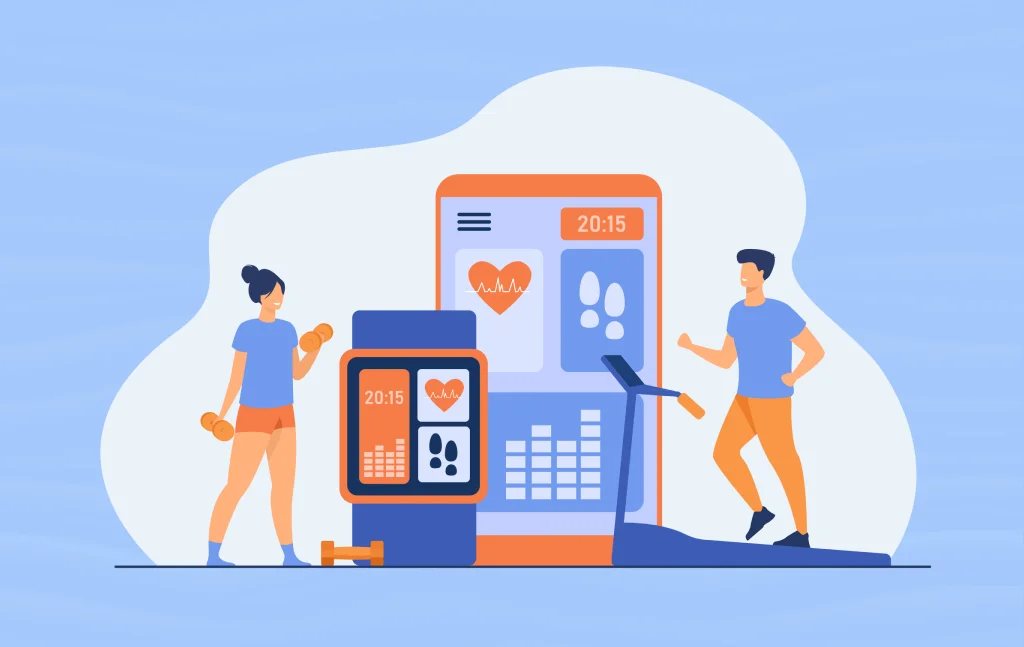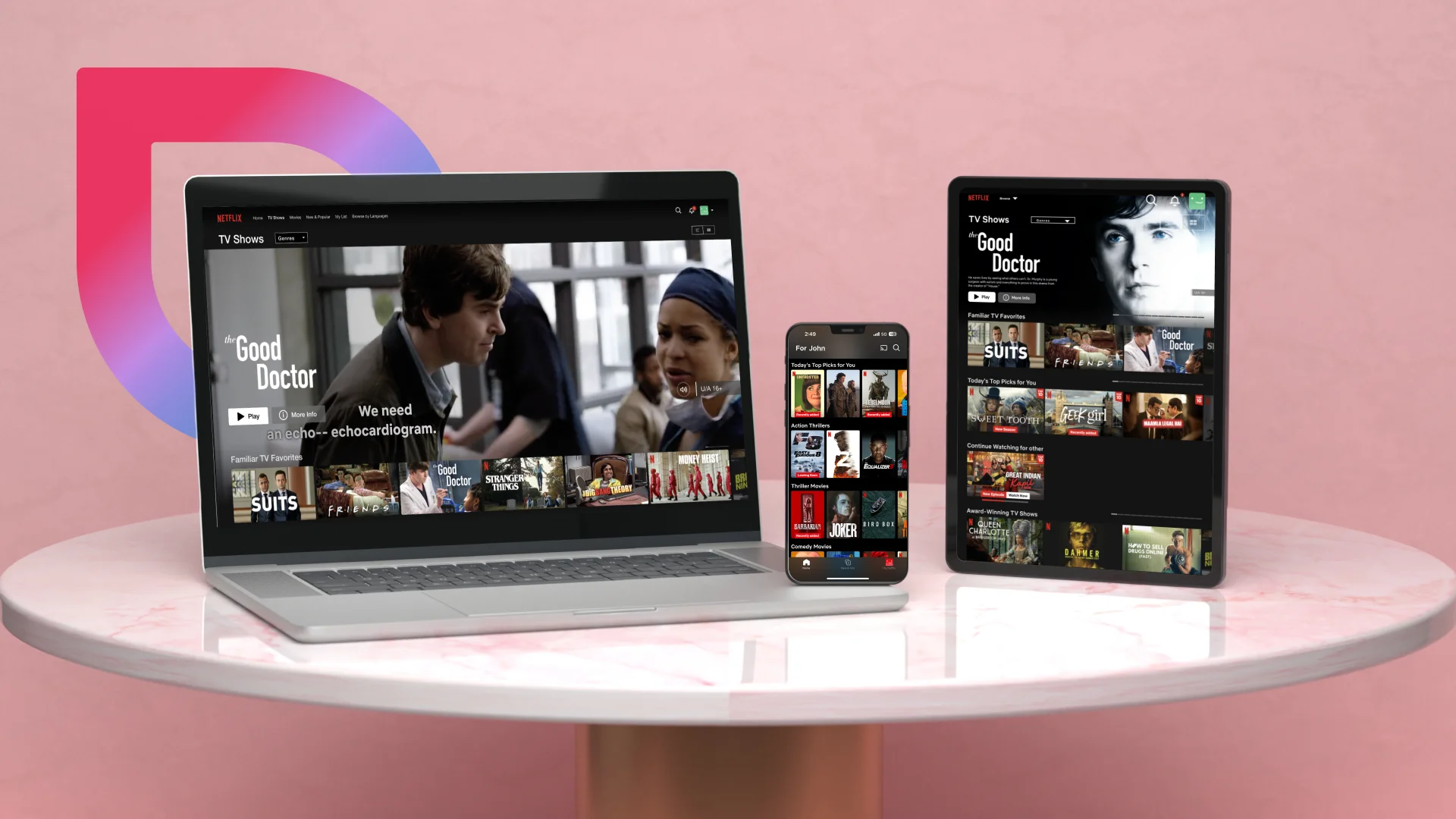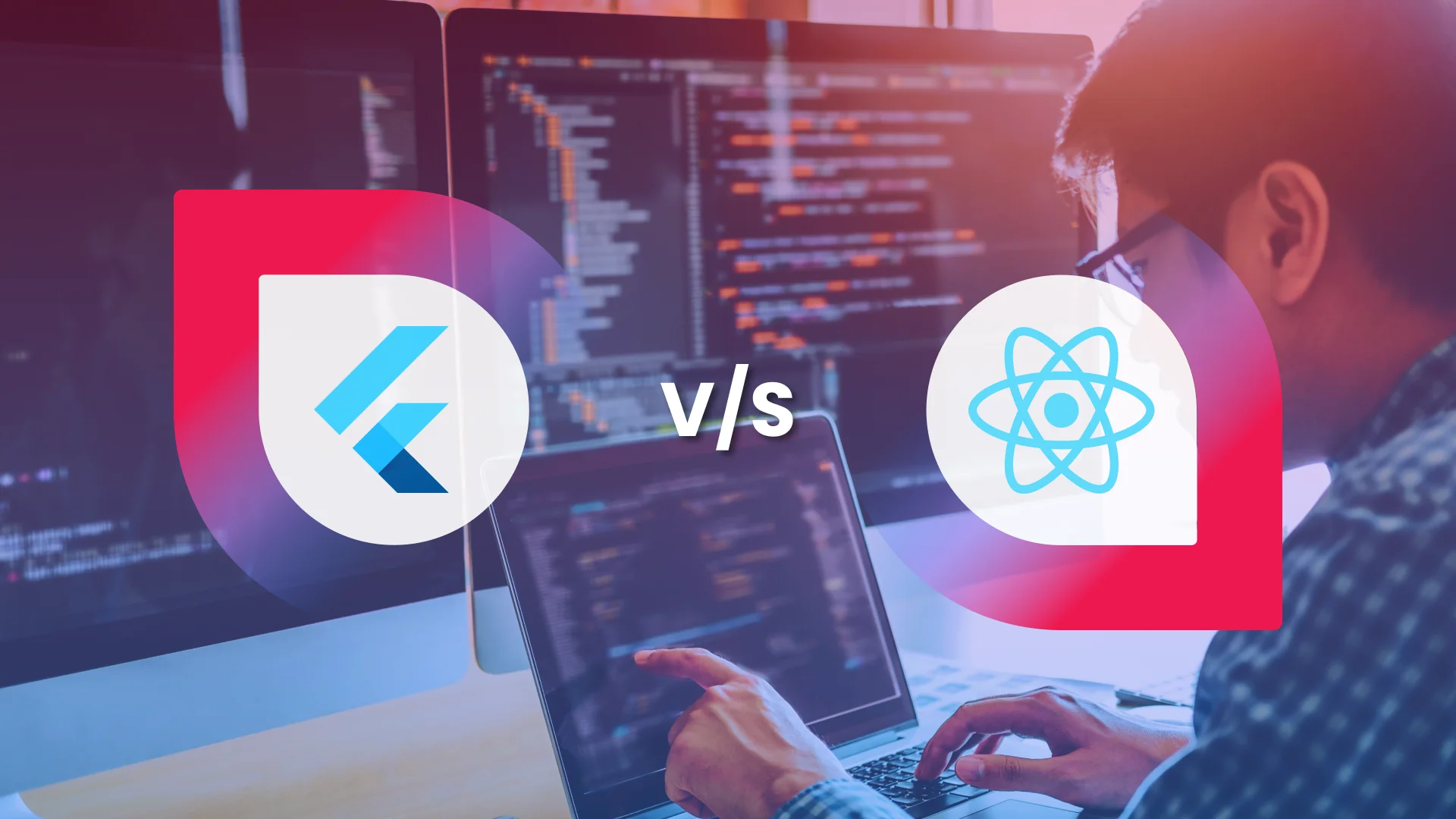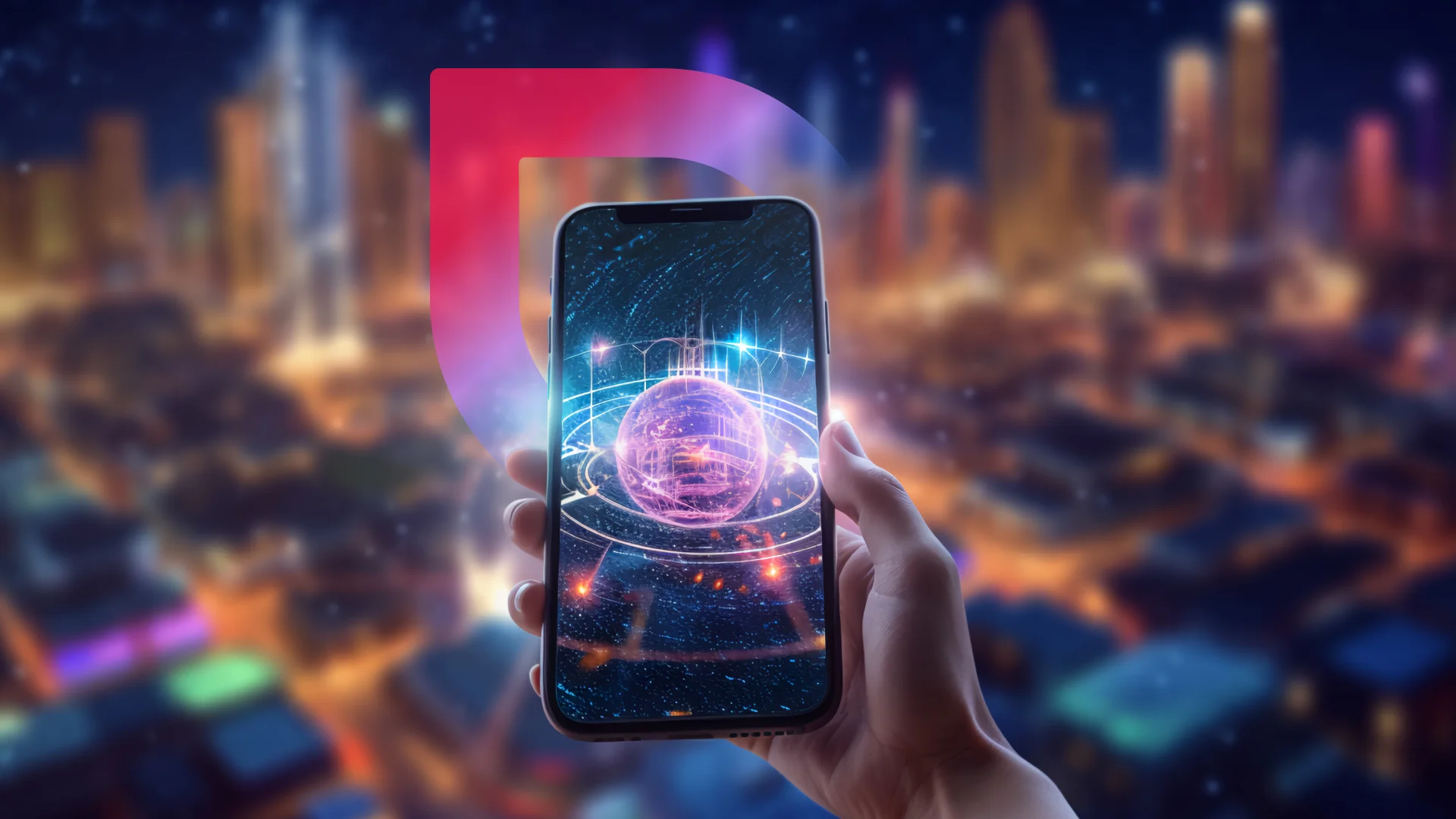Fitness App Development Technologies That Are Making Great Strides
- Mobile
- September 23, 2021
For quite some time now, the millennial wellness enthusiasts have been preoccupied with fitness apps to ensure their overall wellbeing. Now, the same obsession has percolated down to different wearable fitness devices as well.
Thanks to such unprecedented popularity, the fitness app development industry is evolving by leaps and bounds. Owing to the exponential growth in technologies, the fitness apps and devices are getting advanced rapidly.
These days, the fitness apps or devices have become a melange of new designs and tech innovations that not only give these tools a stylish makeover, but also make them function better.
Going by the science of fitness app development, the right technologies make a huge difference in how these devices function.
Technical progress and design aesthetics have given rise to an assortment of fitness devices that include wristbands, chest straps, armbands, clip-ons, smartwatches, bras that can monitor heart rate, socks with built-in pressure sensors, etc.
If you are looking to build premium health and fitness applications, then get acquainted with some advanced technologies that will help you seal the deal successfully.
Read also: Health and Fitness App Development: Must Have Features and Cost Estimation
The two major ingredients for developing fitness apps or wearable fitness devices are APIs & tools, and hardware. Look into the following excerpt to know more about them:
Tools Used in Fitness App Development
Among the most important fitness app development tools claiming to fame, FitBit, health graph, Strava, Lumo, Withings, Shimmer, FoodSpex, Google fitness API, MisFit, Jawbone UP, Garmin, and BMI calculator deserve a prominent mention.
Let’s look at some valuable information about the tools used in fitness app development.
FitBit
Using this tool, the fitness app developers can communicate with FitBit data in their applications.
Health Graph
Using this tool, the users can store their own fitness and health related information on the cloud. The importance of Health Graph is paramount when it comes to helping the users interact with their fitness related data with the other users.
Lumo
The API enables the fitness app developers to access their fitness related information from Lumo Lift and Lumo Back.
Strava
Strava is the holy grail fitness app for the athletes and ardent fitness enthusiasts. This app is mainly known for motivating the users to maintain a healthy lifestyle.
Withings
This tool is globally known for connecting amazing designs and tech innovations in fitness apps and devices. It provides awesome features without compromising with quality. You can access this API tool by registering yourself as a Withings developer.
Google fitness API
The open ecosystem is brimming with a lot of amenities, which can allow the users to automate their fitness data storage.
Shimmer
It is deemed as the very first open source fitness data integration tool. It can offer the users a strong grip over their fitness related digital information.
MisFit
MisFit can let developers incorporate different features like activity tracking, sleep tracking, etc. in a fitness app or device. By saving their sleep logs in a Google Spreadsheet, the users can also get a weekly summary of their physical activities.
Jawbone UP
This open source platform can offer the developers APIs and SDKs to further improve different fitness tracking apps.
Garmin
It offers the required tools to abet a developer in building apps for different wearable devices.
BMI calculator
The BMI calculator helps the users measure their BMI or Body Mass Index.
FoodSpex
This tool is a must have for those, who are looking for detailed information about the nutrition values of different food products. The information provided by this tool mainly revolves around bar code, fat, nutritional content, calories, etc.
Hardware Used in Developing Fitness Tracking Devices
Activity tracking fitness devices have taken the world by storm, thanks to their extraordinary features. Most of these devices generally count on sensors, which transmit health data to mobile applications.
The most used hardware for building a healthcare app or device include ECG sensor, ambient light sensors, skin response sensors, bio-impedance sensors, chest strap, barometric altimeter, accelerometer, compass, and gyroscope.

Let’s gather more information about the hardware used in fitness app development.
Compass, Accelerometer, and Gyroscope
Almost every smartphone and wearable fitness device comprise of motion trackers or compasses, accelerometers, and gyroscopes. A gyroscope refers to a device, which uses the gravity of the earth to decide an object’s orientation in space.
A compass steps in to determine the cardinal direction. An accelerometer is aimed at measuring acceleration based on a motion’s beginning, ending, and overall intensity.
The necessity of motion trackers come into play when it comes to measuring the activities like running, walking, cycling, swimming, and the likes.
With the data gathered, fitness apps and smartwatches can calculate cadence, speed, distance traveled, and the total calories burned. The most exciting thing is that the smartwatches or wristbands can track a user’s sleep pattern, timing, etc. with the help of accelerometers.
Compasses, accelerometers and gyroscopes can be three distinct pieces of hardware. They could also be combined in a single joint motion sensor. Take, InvenSense, for an instance, which provides various integrated hardware solutions.
In a quest to bring a dash of improvement in their smartphone, Apple has recently incorporated a joint motion tracking co-processor into it.
The iPhone XS is said to own an M12 chip, which consolidate compass, accelerometer, and gyroscope. This apart, the latest watch series 4 brought by Apple has a lot more advanced accelerometer and gyroscope, which can measure around 32 g-forces.
Barometric Altimeters
A barometric altimeter is considered to be a better alternative to GPS for tracking altitude and elevation. An altimeter can track altitude by measuring atmospheric pressure and gathering relevant data on elevation while climbing stairs or being on a track.
From the release of both iPhone 6 as well as 6 Plus, iPhones have had built-in altimeters and barometers. The travel elevation and altimeter app for iOS proffers latitude, altitude, and longitude.
The best part is that all these are showcased on top of a completely customizable background. Additionally, this fitness app also has a shortcut to an inbuilt flashlight and several other sharing options.
Global Positioning System or GPS
For those who love running, hiking or cycling to stay fit, it’s important to have a fitness tracker that is embedded with a GPS receiver.
Some of the most popular fitness apps such as RunKeeper, Strava, Runtastic, etc. have also embraced highly advanced GPS technologies.
GPS or Global Positioning System uses 30-some satellites for enabling the users to track their routes, know their positions, and keep a tab on their speed.
There are numerous fitness wristbands and smartwatches that do not own native GPS sensors. Some world famous fitness devices like Sony SmartWatch 4, Apple Watch Series 4, Mobvoi TicWatch E2, Fitbit Ionic, etc. also have inbuilt GPS functionality.
ECG Sensors
Most of the modern fitness activity trackers are counting on optical sensors to measure the heart rate of the users. With the LED sensors, the optical heart rate monitors can measure changes in the users’ blood saturation.
These heart rate monitors pass light through the user’s skin in different body parts like fingers, wrist, biceps, ears, forehead, etc. to track his/her changing blood saturation. Using a PPG (photoplethysmogram), these heart rate monitors can help the users determine their cardiac cycles and heart rates.
Heart rate monitors could be both built-in and standalone. The polar OH1 refers to a standalone optical armband. The standalone heart rate monitors could be used to coincide with a fitness tracker.
For example, nearly every fitness device from Polar and Garmin supports a chest strap. There are more expensive smartwatches and fitness trackers that comprise inbuilt optical heart rate monitors.
The watch series introduced by Apple has electrical as well as optical sensors for measuring the users’ heart rates. Besides monitoring a user’s heart rate, it also notifies him/her if it finds out anything serious or life threatening.
Not only this, using the ECP app, the watch series 4 by Apple can generate an ECG report which is similar to that produced by an electrocardiogram. The Apple watch (from series 4) comes up with a digital crown that is capacitated to measure the heart impulses from the fingertips of a user.
Skin Response Sensors
There are many users who are keen to know how much they perspire while working out. There are some fitness enthusiasts who are interested to keep a tab on their changing body temperature during their work out sessions. The galvanic skin response and temperature sensors can seal this deal with ease.
The Huawei Watch 2 4G and F7 Real time GPS can help the users gather the relevant info in these regards. Galvanic skin response is capable of monitoring and measuring the changing stress levels of the users while they work out.
Also, it can help them gather more accurate data related to their changing heart rates during exercise.
Bioimpedance Sensors
Bioimpedance is capable of measuring the body tissues’ resistance to the amounts of electric currents. This feature allows a fitness device to capture different physiological signals that include respiration rate, heart rate, galvanic skin response, and the likes.
Bioimpedance needs just a little capacity for acing these deals. The top notch fitness activity trackers like UP4 wristbands and Jawbone UP3 also use Bioimpedance.
Ambient Light Sensors
The ambient light sensors can help in detecting and measuring the amount of light in an environment. Their perception of brightness can match that of the users’ eyes.
These sensors can adjust to the brightness of a device’s displace automatically, minimizing a user’s eye strain. Most of the high-end smartphones use ambient light sensors to protect the users’ eyes. Some wearable fitness devices are also found to use ambient light sensors.
In a Nutshell
The fitness app development industry is filled to the brim with a number of advanced technologies. Thanks to these top-tier technologies, legions of activity tracking apps have come into existence.
These fitness apps and wearable devices spell opportunities galore for the developers to assist the millennials with staying fit. For those fitness app developers, who enjoy new explorations and innovations, giving the aforementioned technologies a shot is mandatory.













